'The Doctors Said They Didn’t Think He Was Going To Make It To The Weekend So We Should Start Making Plans' – The Remarkable Story Of Charlie Crosby's Courageous Journey From Near Death Back Onto The Golf Course
Charlie Crosby collapsed in June 2019 and it looked like his days were numbered, but amazingly, the former scratch golfer is back playing again. Here, with the help of his dad, he tells his inspiring story...
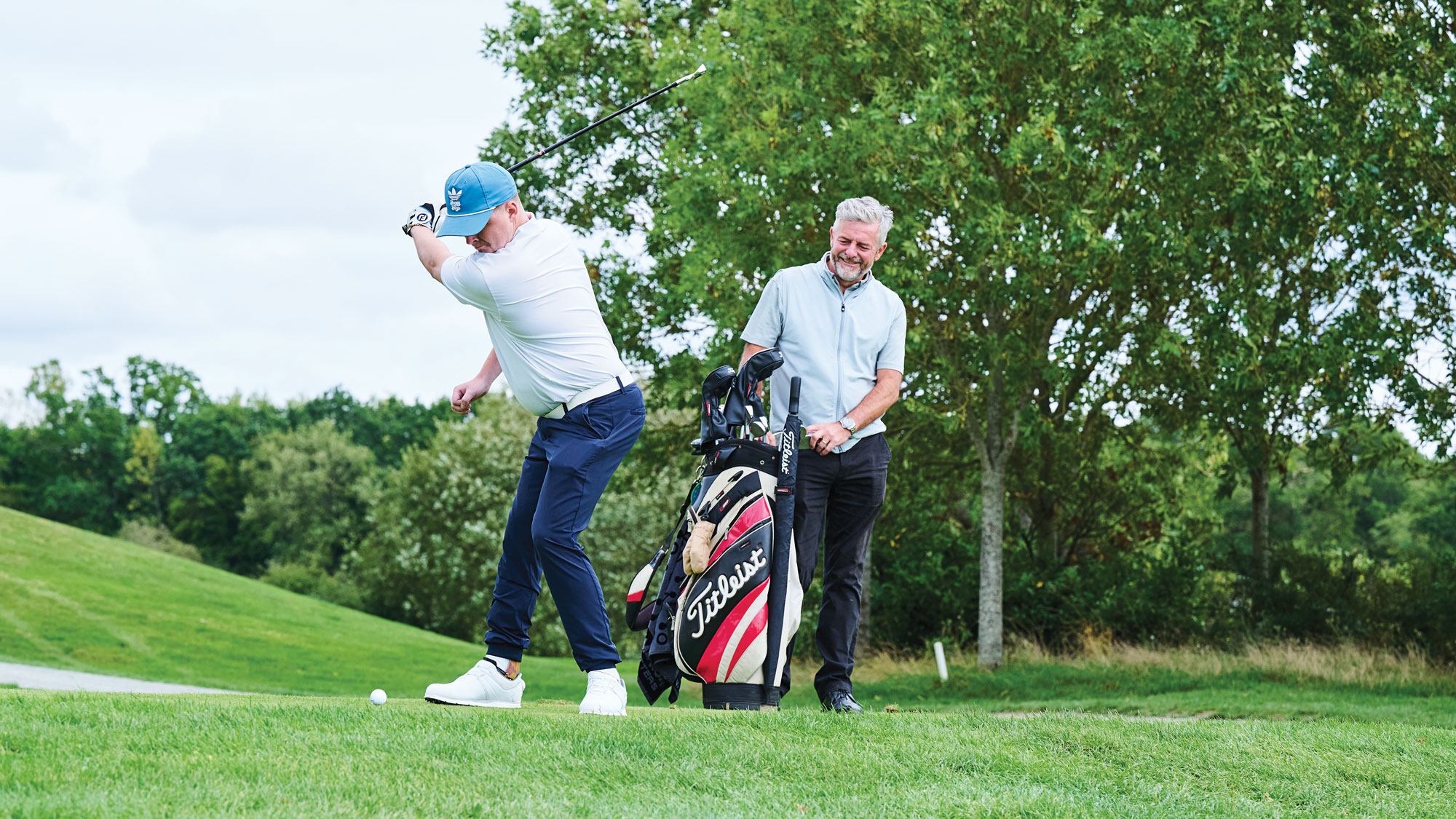

I’ll admit to feeling a little nervous as I sit in a back room at The Shire London with Cae Menai-Davis, whose family run the golf club there. Why? Well, I’m there to chat to Charlie Crosby and his father, Lee, about Charlie’s rehabilitation and return to golf following a major medical episode in 2019 that turned their lives upside down.
I’m nervous that I won’t know quite what to say, but I shouldn’t have worried. A few moments later, there’s a bit of a kerfuffle and much laughter outside before the pair walk in and Charlie greets me with a big, cheeky smile. Yes, walks in – a miracle in itself and something I definitely wasn’t expecting given what I knew of Charlie’s situation.
Laughter remains a common refrain throughout the interview, along with the odd tear from Lee when something I ask triggers a particularly poignant memory. The family has had to travel a long road since that day in June 2019 when Charlie was found unconscious on the floor of his girlfriend’s university flat at 23 years of age.
You may have seen a DP World Tour video from the day Charlie and his family were invited to the BMW PGA Championship in 2021, and they believe certain European Tour pros were instrumental in Charlie coming out of his coma in 2019, more of which in a moment. First, though, how good had Charlie got at golf before his life-changing episode?
“I played as a junior with dad from about five and then didn’t really get serious until I was about ten,” Charlie tells me. I ask when he first beat his dad. “When I was about 13,” he says smiling.
“Yes, he got really good pretty quickly and was captain of the junior team over the road at Old Fold Manor,” dad Lee continues. “He came down rapidly from 16 in the space of about two weeks. The manager kept texting me and saying, ‘It appears Charlie has hit a bit of form,’ because he was playing every day over the summer.”
“I shot one-under in one round,” Charlie interjects.
Get the Golf Monthly Newsletter
Subscribe to the Golf Monthly newsletter to stay up to date with all the latest tour news, equipment news, reviews, head-to-heads and buyer’s guides from our team of experienced experts.
“Yes, he was off something stupid like 14 and shot one-under gross!” Lee confirms. “It was crazy. I was off about 6 and that’s when he started beating me. He thought he’d become pro, but then realised it wasn’t just chasing the sun around on tour and you actually had to do a bit of work!”
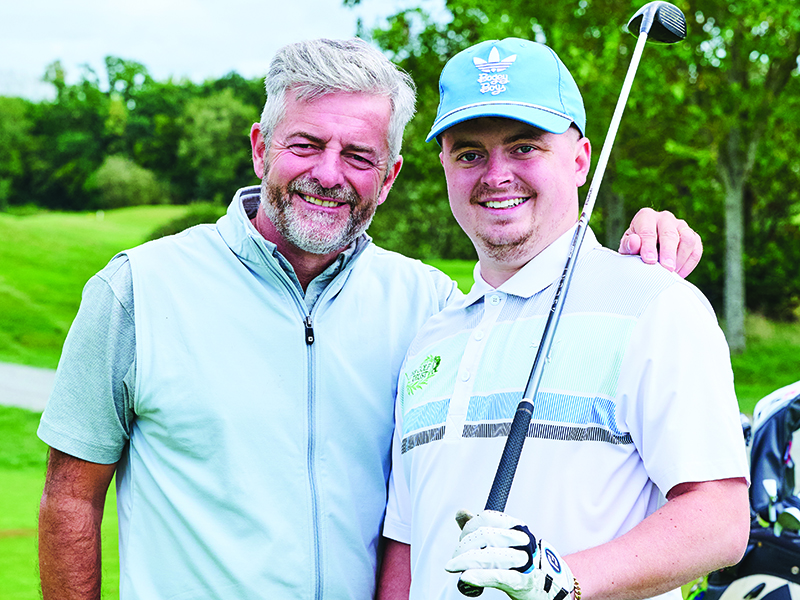
Charlie and Lee at The Shire London
Life-changing Moment
Charlie got down to scratch at one stage and golf was clearly a huge part of life for the Crosbys before the events of June 2019. “Charlie played semi-professional football as well for Cockfosters, but was just getting back into his golf more than football,” Lee tells me. “He had a scratch match at Sandy Lodge and came back and said he was going to get back into it more because he was hitting the ball really well.”
Then everything changed. An AVM – arteriovenous malformation – burst in Charlie’s brain out of the blue. “You’re born with it,” Lee tells me. “They can be anywhere in the body and this happened to be in his brain. It tends to rupture in very fit young men and he was playing semi-professional football and five-a-sides all the time and always in the gym. Once you hit about 30, you’re safe. The surgeon said if he was just a couch potato, it wouldn’t have happened.”
After a delay when medical staff initially thought his unconsciousness was probably drink- or drug-related, a CT scan soon revealed the heartbreaking reality. “They put him into an induced coma on the Thursday,” Lee continues. “On Friday, he had eight hours of surgery. The surgeon came out and said it had been touch and go but he was okay and, me being his dad, the first thing I asked was, ‘Will he ever play golf again?’ because we play in the European Father and Sons together, which is how we’d met professionals such as Richard Mansell and Matt Southgate. He said, ‘No chance.’”
Indeed, Charlie was far from out of the woods, despite the seeming success of that lengthy surgery. On the Saturday, swelling triggered more emergency surgery to which Charlie didn’t react well. “On the Wednesday, they called my wife Carole and me into this room and we knew that was a bad sign,” Lee says. “They said they didn’t think he was going to make it to the weekend so we should start making plans.” Thankfully, Charlie did make it, and from then on kept getting a little stronger. “One morning we woke up and his mum looked at her phone and said, ‘He’s active on WhatsApp!’ It was the most amazing thing. He’d come out of his coma and looked at his phone to see where he was. It was unbelievable.”
Lee and Carole are convinced that a number of DP World Tour pros played a major role here. “Matthew Southgate was sending him messages from different pros saying, ‘Come on Charlie – you’re a fighter. You can do this,’” Lee recalls. “My wife and I were playing these videos to him every day and I’ll swear that was one of the reasons why he came out. We started to see a flickering of the eyes and we’d think, ‘Did we imagine that?’ Then his left hand would start moving. And then, while both Richard and Matt were with him, that’s when he first started to come round.”
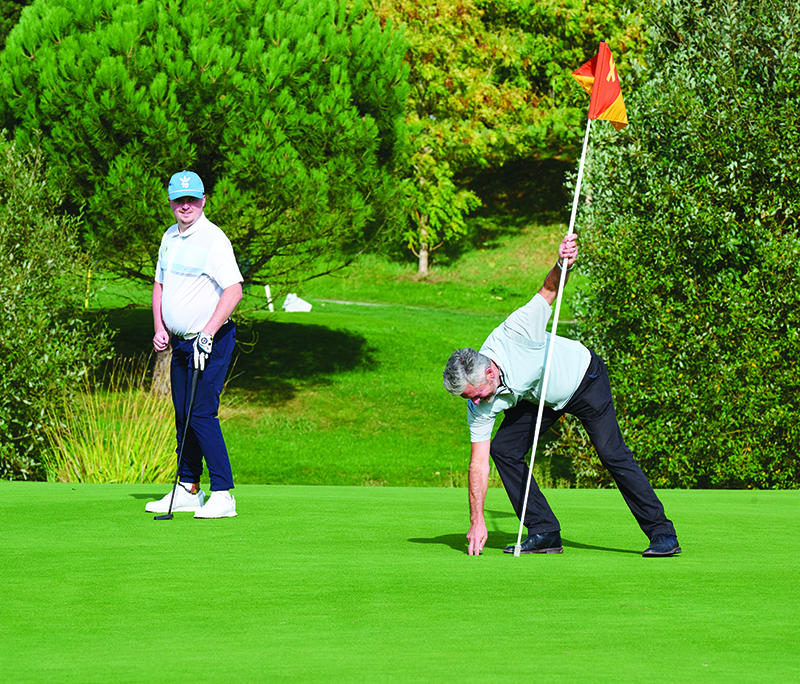
"Now, with one hand, putting is easy!"
The long road to recovery
Clearly, returning to golf was still a pipe dream at that stage, but despite the surgeon’s initial pessimistic diagnosis, that is exactly what has happened thanks to a huge amount of help from two language therapists, two neuro-physiotherapists, a personal trainer and Menai-Davis. “When we first met, I told Cae what the surgeon had told me,” Lee recounts. “He said, ‘We’ll see about that – we’ll get him playing again.’ Since then, thanks to this man, it’s been unbelievable what’s happened.” This man and a very special machine called the ParaGolfer.
This incredible piece of kit, which I not only get to see, but also end up strapped into, allows disabled people who can’t stand to do just that, thus opening up golf as a possibility once more. Menai-Davis’ charity, The Golf Trust, currently has six around the country used by around 100 people, with plans to acquire more. But they’re not cheap. “Brand new, they’re about £23,000, but we live in the second-hand market,” Menai-Davis tells me. “When you’re in a wheelchair, standing up is so important, not just for sport but for the body.”
To recap, Charlie had right-side paralysis and could barely speak beyond yes and no when he came out of his coma. “Plus the odd swear word,” Lee adds. “The nurses said, ‘The words that come most easily are the swear words, so don’t be offended or surprised – we’re used to that.’ The bleed was on the left side of the brain so it affects the right side of the body. They said straight after the surgery, ‘He will have right-sided paralysis,’ although that’s not permanent. You can train the brain around it and he’s improving with the therapy. But that part of the brain also controls speech and a lot of cognitive things and, again, that’s improved massively.”
Hitting golf balls is now a one-handed experience for Charlie using his ‘good’ left arm. I can tell you from personal experience in the ParaGolfer that left-hand-only golf is so much harder than right-hand only. “That first day was incredible,” Lee reflects, remembering the first time Charlie hit a golf ball again.
“Yes, just seeing you hitting balls together whether it went 5ft, 5 yards or 500 yards – it didn’t matter,” Menai-Davis says. “You were both on the range hitting balls. The goal wasn’t to get him playing The Masters – the goal was to get him playing social golf again.”
I ask Charlie what his first shot back felt like. “Weird – I lost a ball,” he tells me. And how soon before one came out of the middle? “Five minutes,” he smiles.
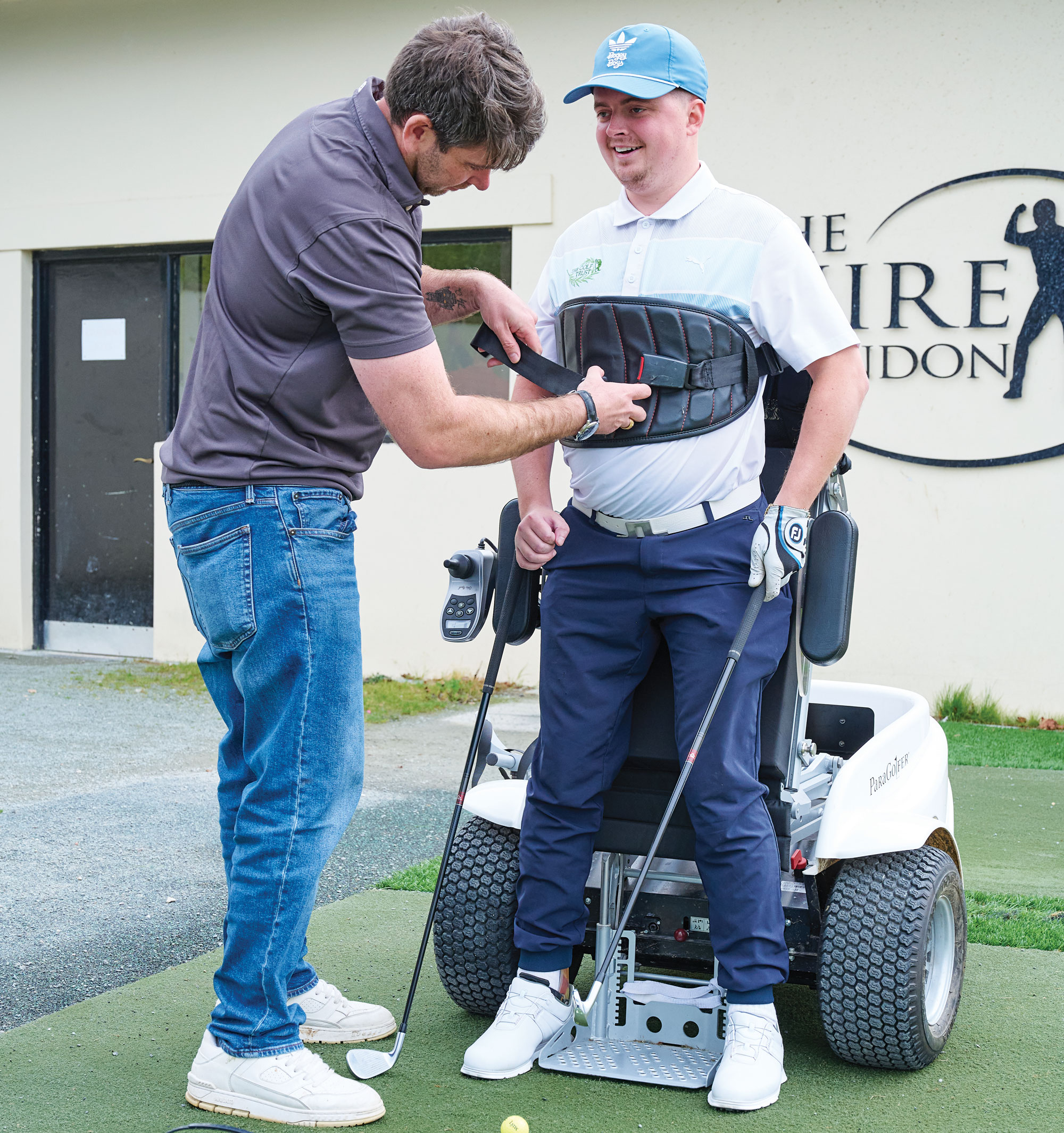
Cae Menai-Davis fitting Charlie into the ParaGolfer
Astonishing progress
“We don’t putt first – we try to make a bigger movement, whereas if you were teaching a junior we would go putt, chip, pitch, full swing,” Menai-Davis explains. “But I was scared of hurting Charlie when he stood. A small movement actually needs bigger muscle groups and we didn’t know where he was at physically. With disability, you’ve got to learn the person, what they can and can’t do, and more importantly, what doesn’t hurt them. The biggest thing is confidence that what you’re telling them isn’t going to hurt them.
“The goal was to get it in the air because we were making contact every time, so we got the smash bag out and just got him hitting it as hard as possible to build that left-side resilience. We did five minutes of that, then hit a chip, five minutes then a chip, and the release pattern was getting there. In the second session, it was like a switch had been flicked and every shot was there – the release was there, the extension.”
Eventually, Charlie was able to stand and swing on his own without the ParaGolfer, and now uses a kind of mobility scooter to get around the course - astonishing progress given the surgeon’s original prognosis. “At one point we were told he would never walk, never be able to speak more than one word, wouldn’t be able to eat or drink, would be fed through a tube, so it’s just amazing,” Lee says. “When he goes back to the hospital, they call him a miracle. They say there is no ceiling – especially speech. The biggest thing for you now is speech, isn’t it?”
“Yes,” Charlie agrees, before finding another unlikely positive from this whole experience. “Four years ago, my putting was horrible – now, with one hand, it’s so much better. Putting is easy,” he says. Sounds like a one-handed putting school could be a business opportunity, I suggest. “Exactly!” he laughs.
As for his speech, it seems something called neuroplasticity may hold the key to training the other side of his brain to handle it more. “How they’ve described it to me is, if you imagine the underground map and you want to get from there to there but one station on the route is shut, you have to find another way round it,” Lee explains. “That’s what his brain is doing – finding new routes to the end goal.”
Just as Charlie can remember the first time he beat his father all those years ago, so too can he remember beating him again for the first time after his AVM. He’s quick to remind his dad of this as we draw to a close. “Yes, you did,” Lee smiles.
“Thank you!” Charlie beams.
“But you don’t like to talk about it, do you?” Lee quips back.
Seeing father and son batting it back and forth, as only true golfing pals can, adds a heartwarming element to the story. We all know what a great sport it is that we play, but to see the multiple positive effects that being able to play golf again has brought to Charlie and his family makes it seem all the greater.
For my parting shot, I ask Charlie just how much being able to hit golf balls again has given him a boost. “Lots. It’s changed my life,” he smiles. Remarkable from a young man who has had his life changed so dramatically.
“Yep, we can see it in you,” says his dad proudly.
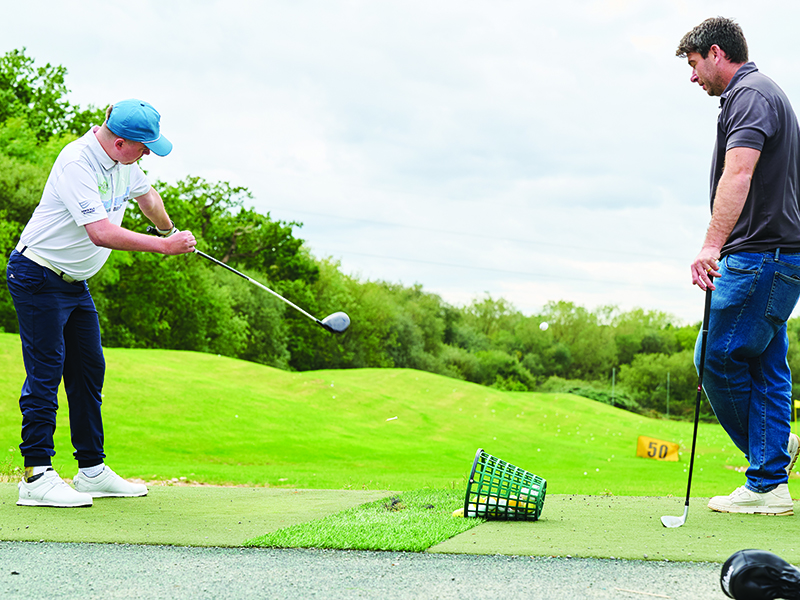
Charlie and Cae on the range at The Shire London

Jeremy Ellwood has worked in the golf industry since 1993 and for Golf Monthly since 2002 when he started out as equipment editor. He is now a freelance journalist writing mainly for Golf Monthly. He is an expert on the Rules of Golf having qualified through an R&A course to become a golf referee. He is a senior panelist for Golf Monthly's Top 100 UK & Ireland Course Rankings and has played all of the Top 100 plus 91 of the Next 100, making him well-qualified when it comes to assessing and comparing our premier golf courses. He has now played 1,000 golf courses worldwide in 35 countries, from the humblest of nine-holers in the Scottish Highlands to the very grandest of international golf resorts. He reached the 1,000 mark on his 60th birthday in October 2023 on Vale do Lobo's Ocean course. Put him on a links course anywhere and he will be blissfully content.
Jezz can be contacted via Twitter - @JezzEllwoodGolf
Jeremy is currently playing...
Driver: Ping G425 LST 10.5˚ (draw setting), Mitsubishi Tensei AV Orange 55 S shaft
3 wood: Srixon ZX, EvenFlow Riptide 6.0 S 50g shaft
Hybrid: Ping G425 17˚, Mitsubishi Tensei CK Pro Orange 80 S shaft
Irons 3- to 8-iron: Ping i525, True Temper Dynamic Gold 105 R300 shafts
Irons 9-iron and PW: Honma TWorld TW747Vx, Nippon NS Pro regular shaft
Wedges: Ping Glide 4.0 50˚ and 54˚, 12˚ bounce, True Temper Dynamic Gold 105 R300 shafts
Putter: Kramski HPP 325
Ball: Any premium ball I can find in a charity shop or similar (or out on the course!)
-
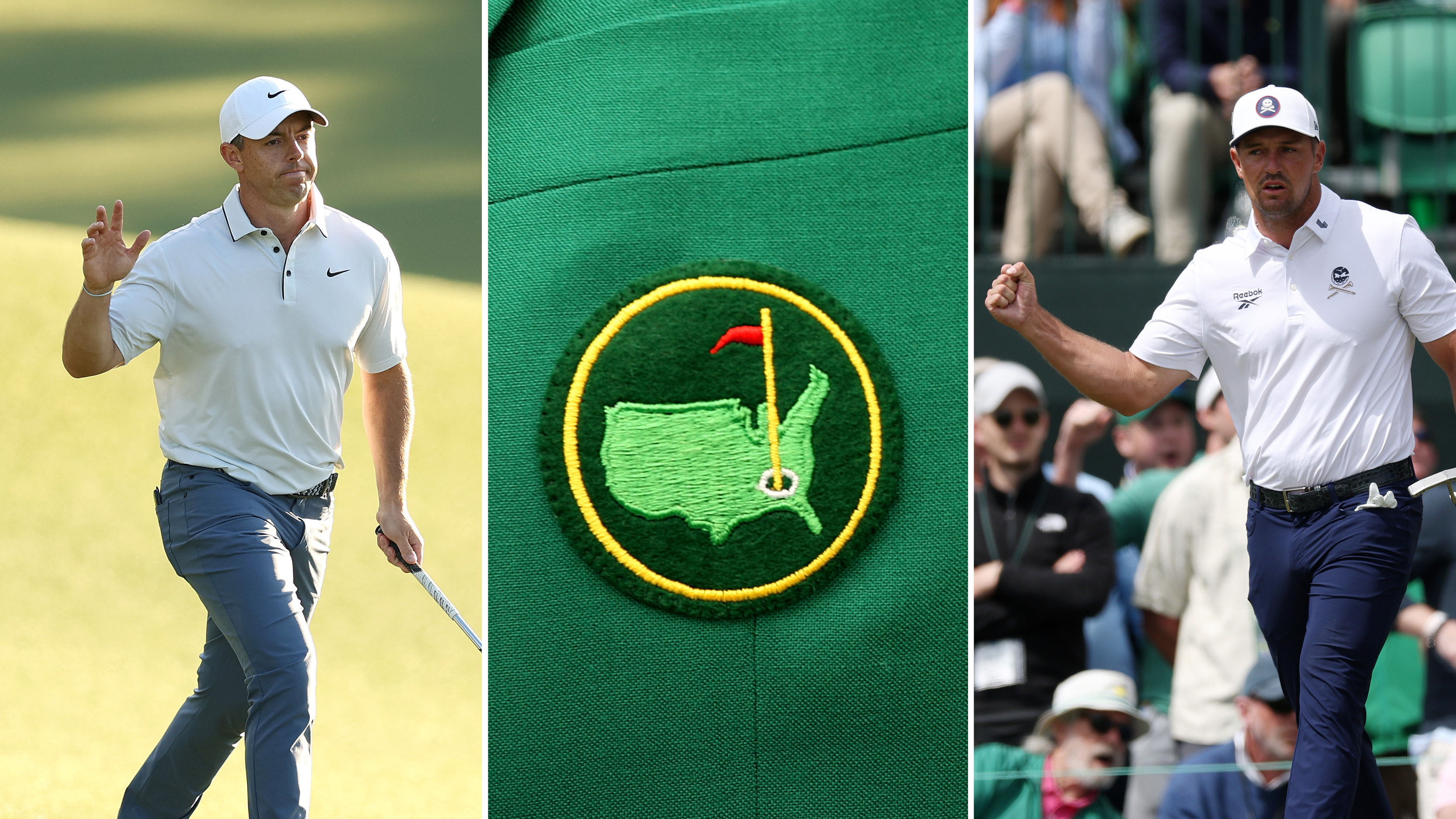 Rory McIlroy vs Bryson DeChambeau: Who Are We Picking To Win The 2025 Masters?
Rory McIlroy vs Bryson DeChambeau: Who Are We Picking To Win The 2025 Masters?We're set up for a blockbuster final day at Augusta National where Rory McIlroy and Bryson DeChambeau play together in the final group
By Elliott Heath Published
-
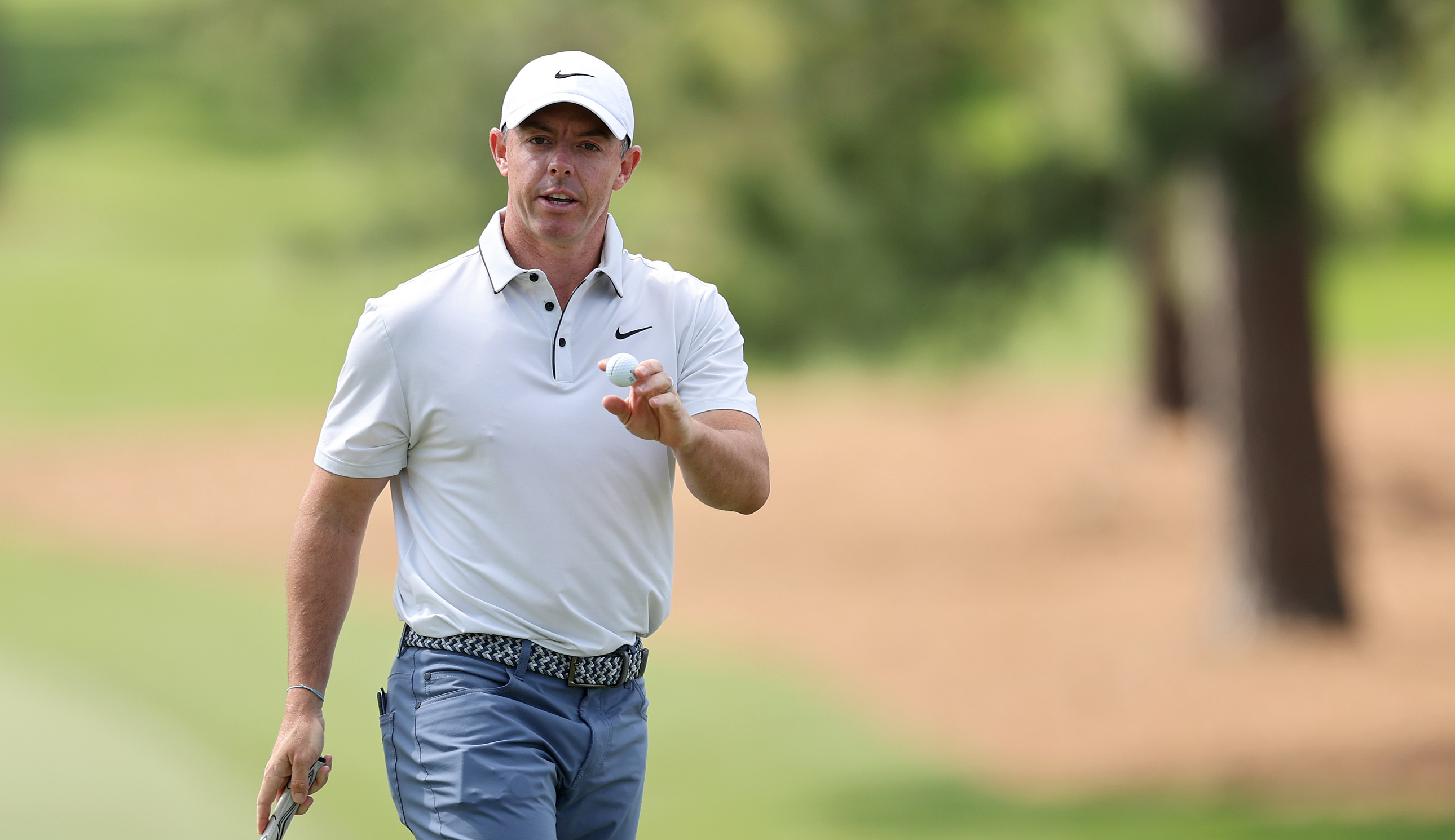 The Masters Crystal Rory McIlroy Has Already Won At Augusta National This Week
The Masters Crystal Rory McIlroy Has Already Won At Augusta National This WeekMcIlroy leads going in to the final round at Augusta National, with the four-time Major winner already bagging some silverware before he looks to claim the Green Jacket
By Matt Cradock Published
-
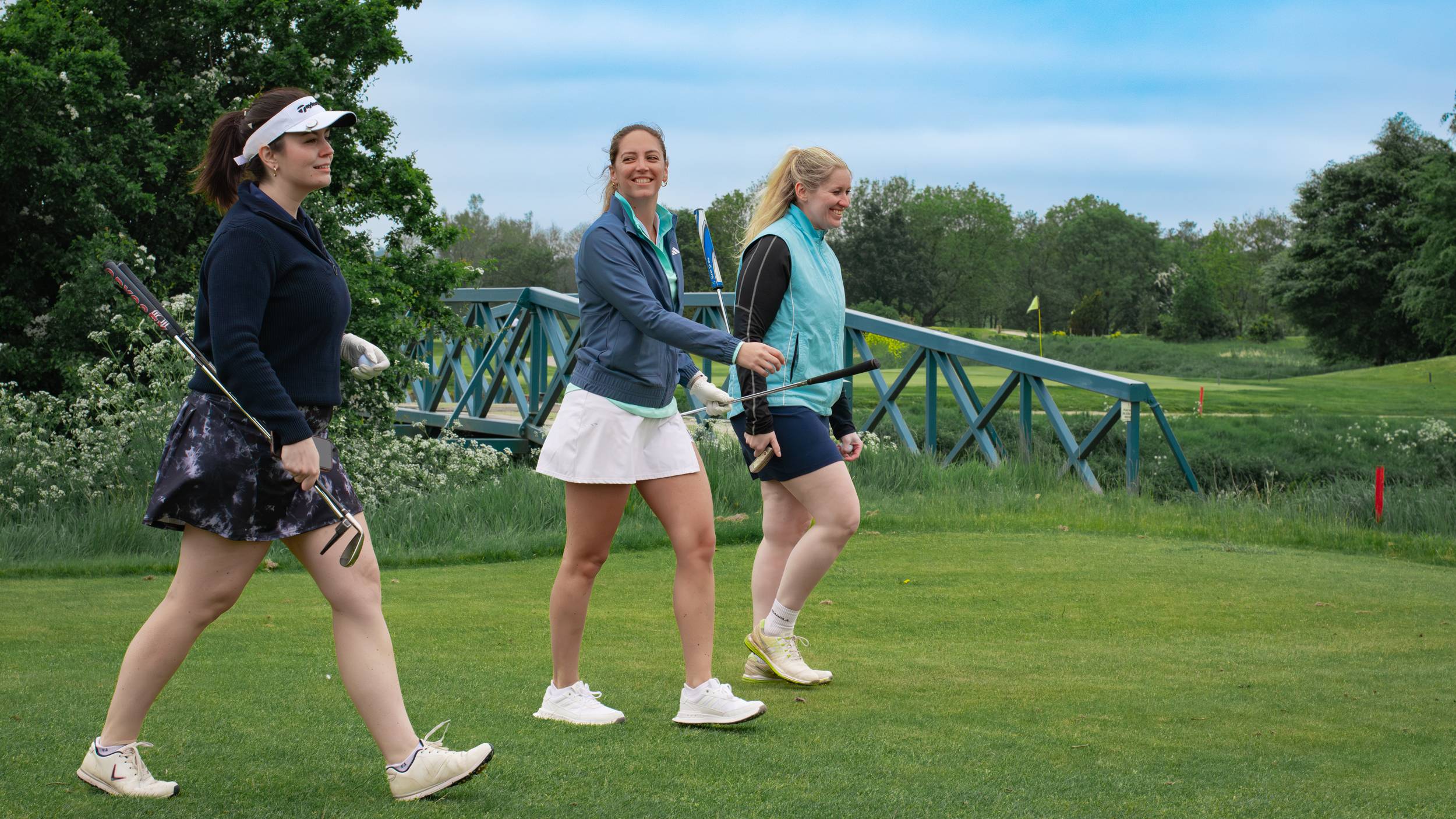 ‘I Want To Play Golf, But…’ - The Women Redefining Golf On Their Own Terms
‘I Want To Play Golf, But…’ - The Women Redefining Golf On Their Own TermsTo coincide with #AccelerateAction, the theme for International Women's Day, we highlight the way female golfers are driving change
By Alison Root Published
-
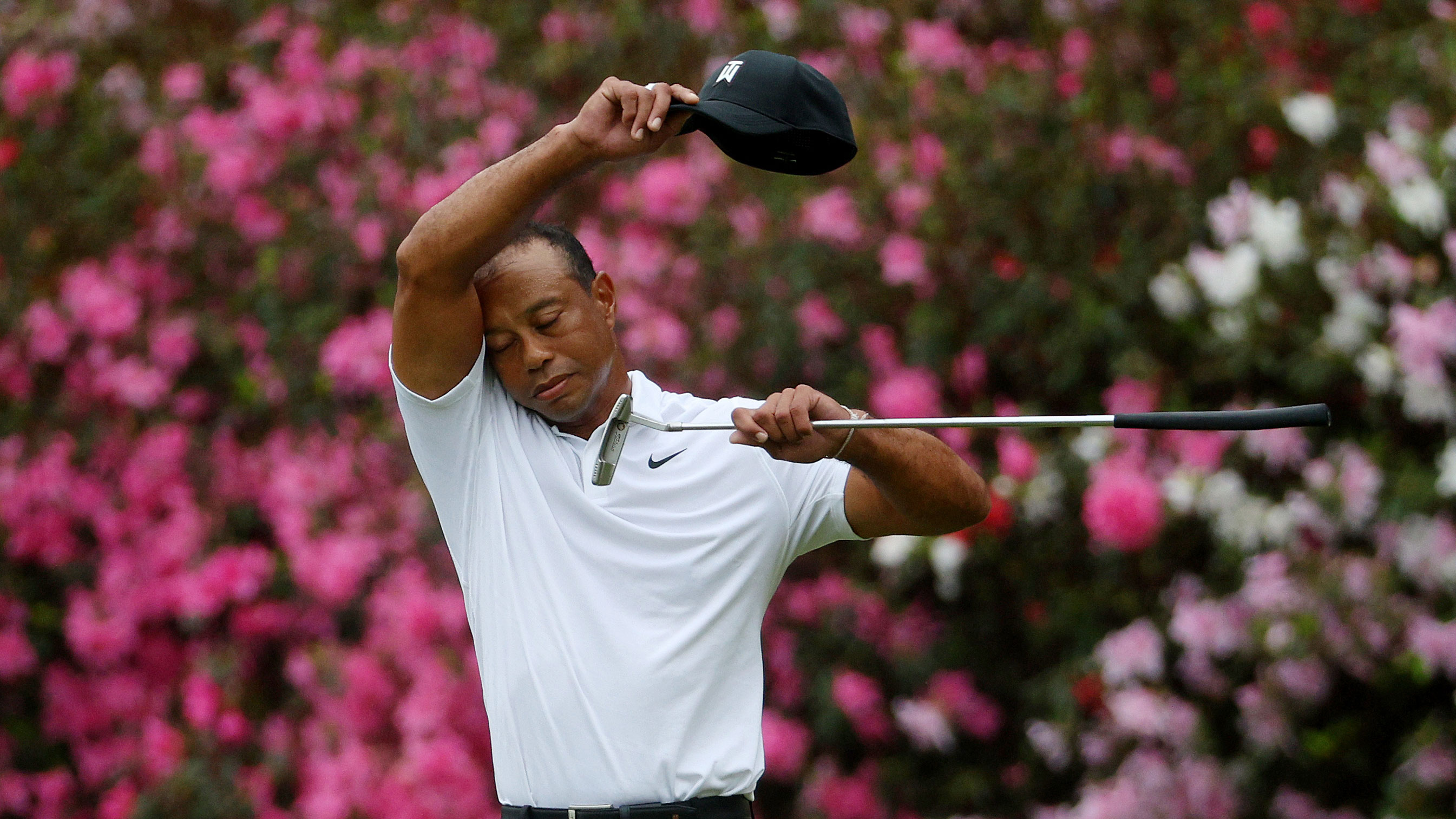 'He Nearly Fresh Aired It. It Came Off The Heel And Almost Hit His Foot' – Legendary Caddie Recalls The Worst Shots He's Ever Seen Tiger Woods Hit
'He Nearly Fresh Aired It. It Came Off The Heel And Almost Hit His Foot' – Legendary Caddie Recalls The Worst Shots He's Ever Seen Tiger Woods HitThe 19th Uncut podcast co-host and legendary caddie Billy Foster looks back on two shots that Tiger Woods will want to forget..
By Mark Townsend Published
-
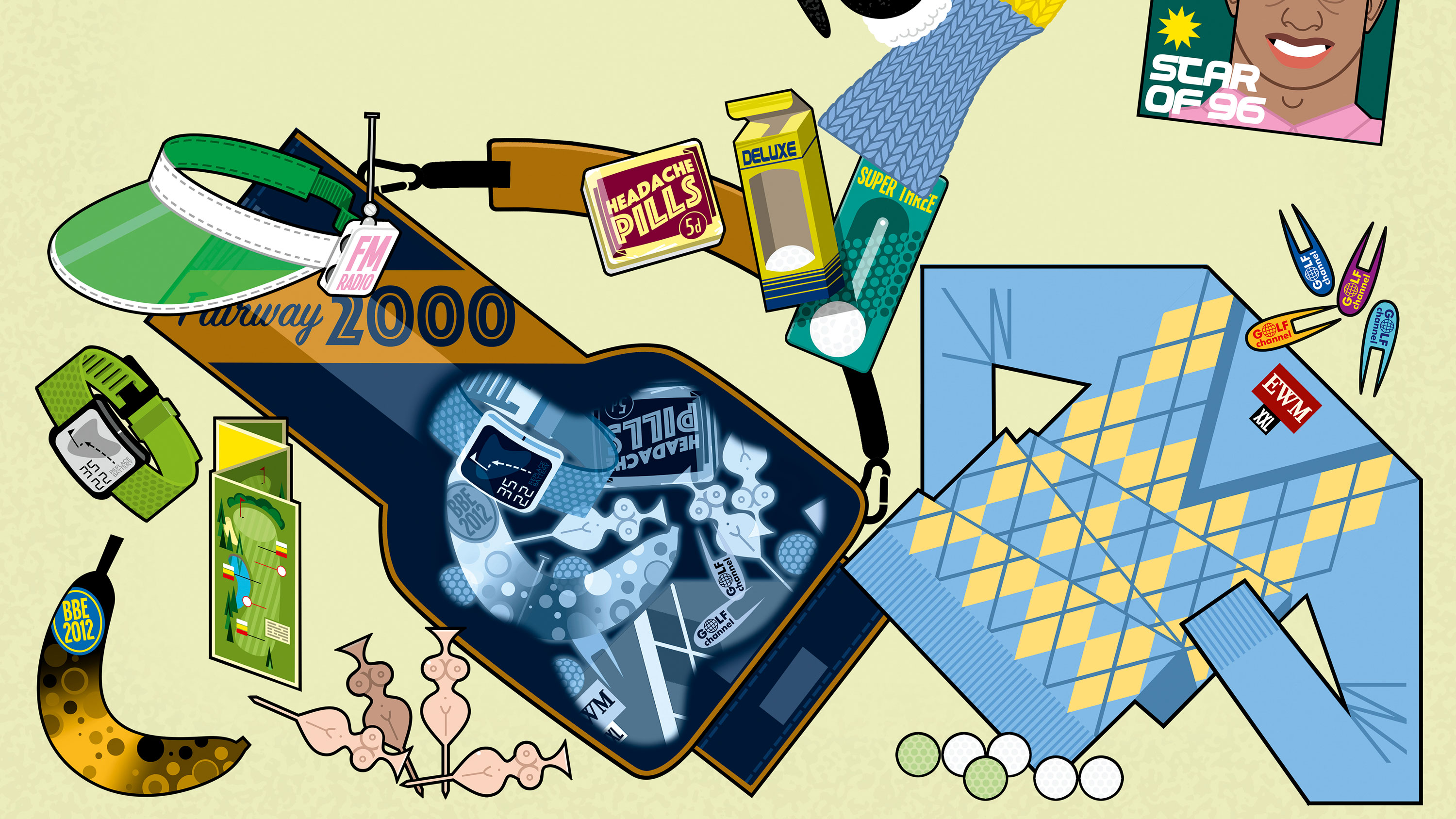 What Lies Beneath? The 8 Items You’re Likely To Find Buried In Golfers’ Bags
What Lies Beneath? The 8 Items You’re Likely To Find Buried In Golfers’ BagsGolf bags are home to balls, clubs and valuables, but there’s typically much more lurking in the depths that hasn’t seen the light of day in months or even years…
By Nick Bonfield Published
-
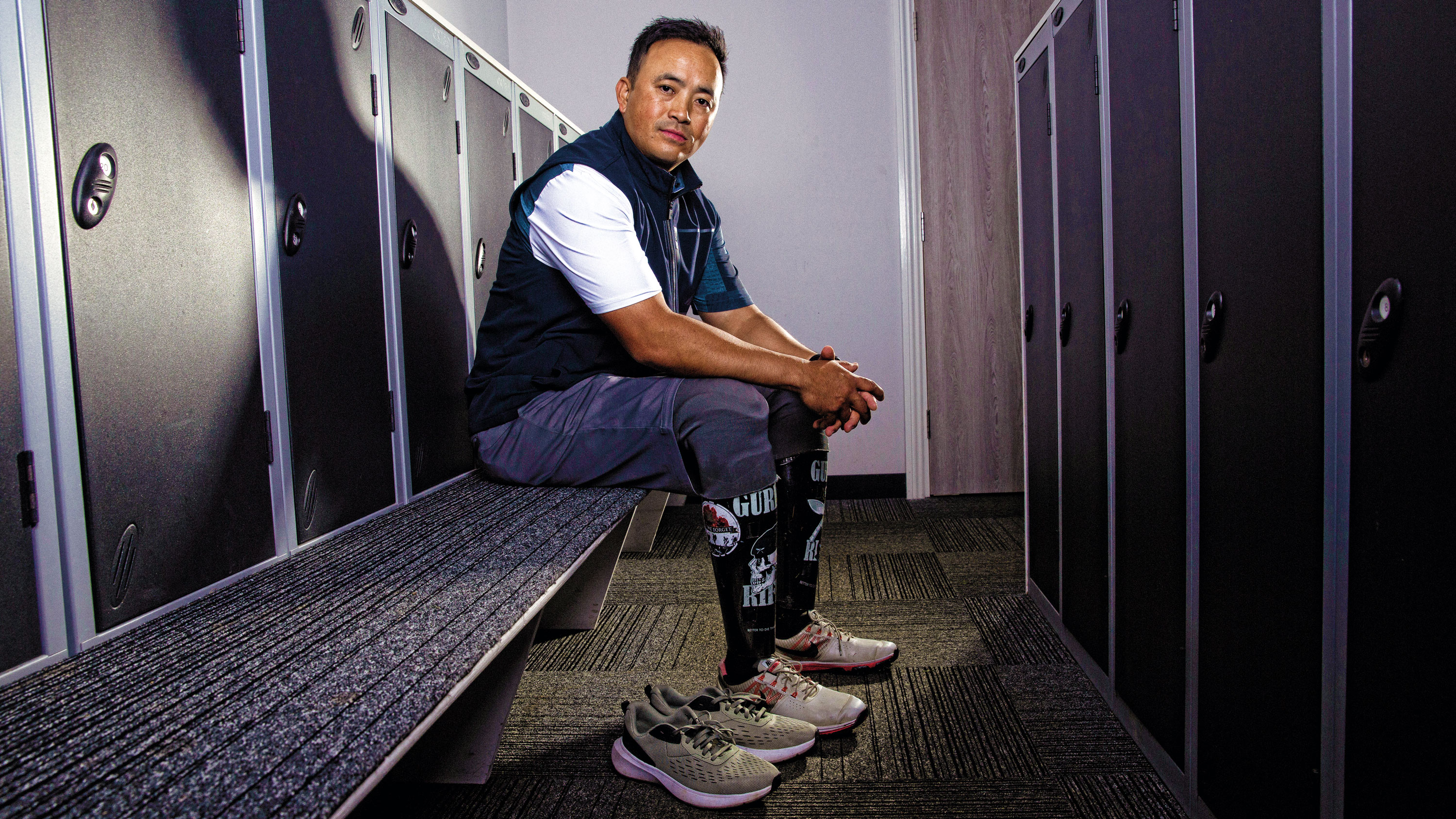 'I Didn't Think I'd Walk Again... Now I Can't Think Of My Life Without Golf'
'I Didn't Think I'd Walk Again... Now I Can't Think Of My Life Without Golf'Double amputee Kushal Limbu recounts the day in Afghanistan that changed his life and tells how golf has been an integral part of his rehabilitation...
By Jeremy Ellwood Published
-
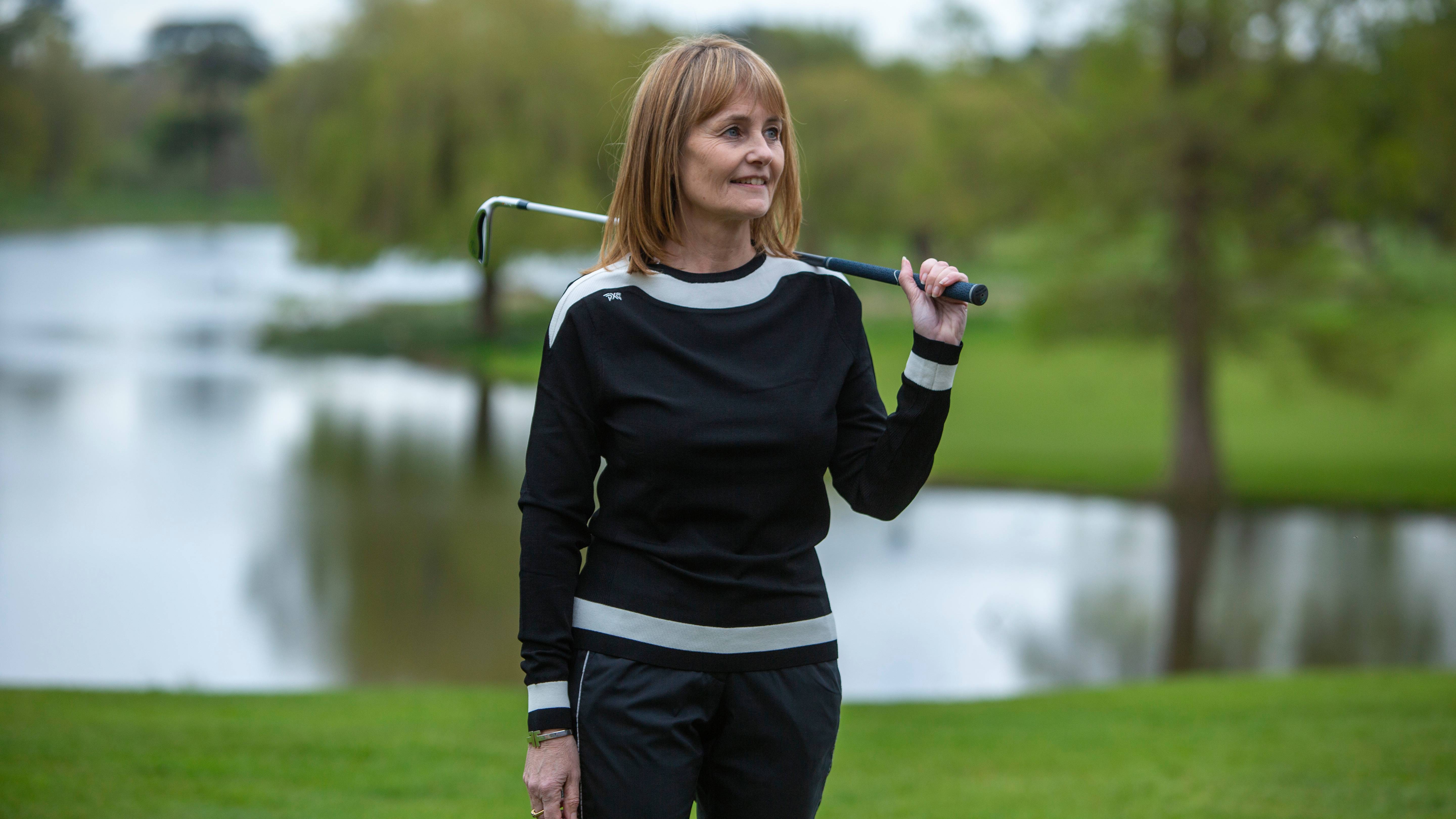 I Missed My Golf Club Membership So Badly (For Reasons That Might Surprise You) But I'm So Glad I've Rejoined...
I Missed My Golf Club Membership So Badly (For Reasons That Might Surprise You) But I'm So Glad I've Rejoined...Our Women's Editor Alison Root has rejoined a golf club and believes it is one of the best decisions she has ever made
By Alison Root Published
-
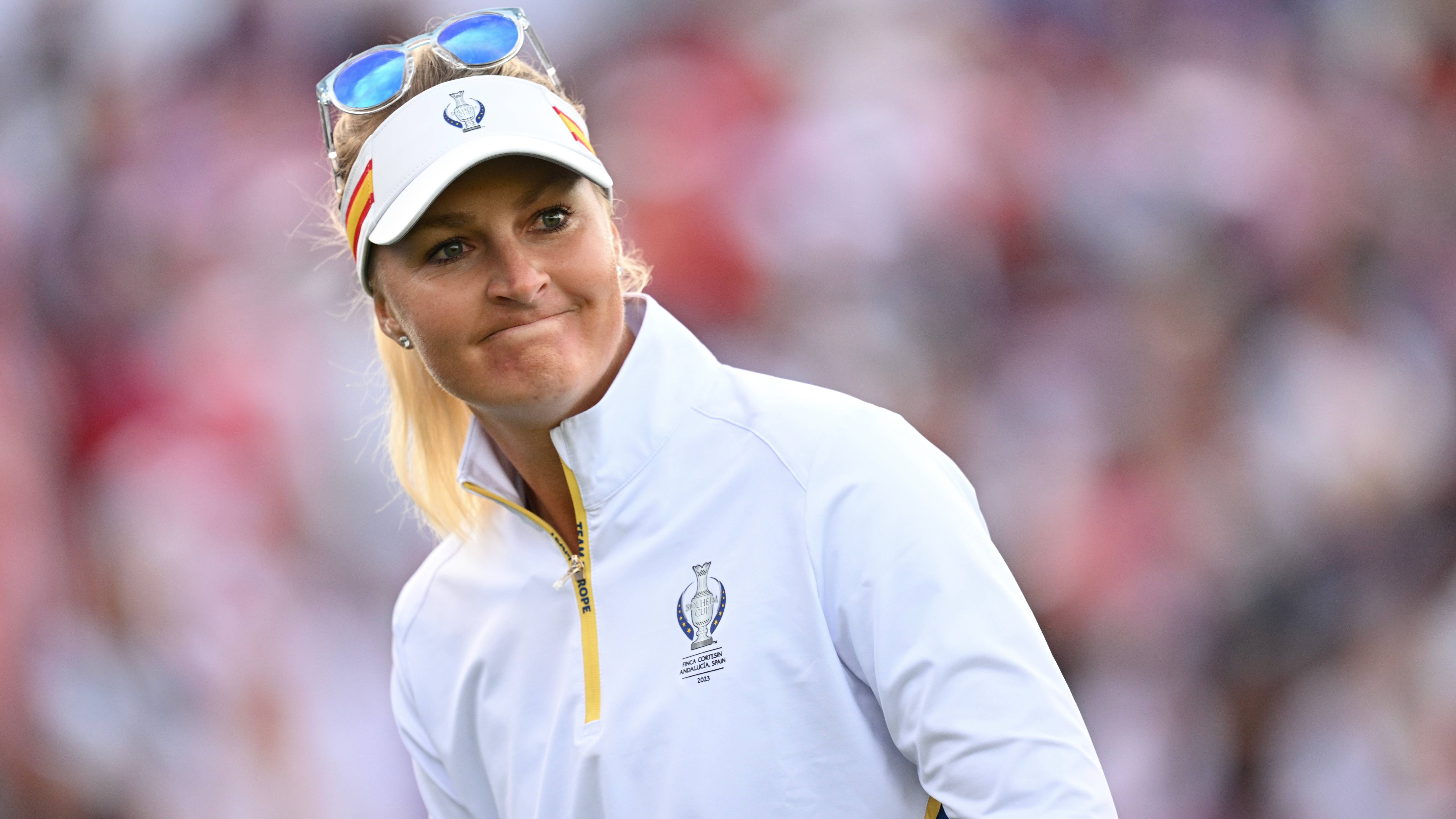 'I Became The Middleman, Players Would Sometimes Come To Me First' - Solheim Cup Player Anna Nordqvist On Her Dual Role
'I Became The Middleman, Players Would Sometimes Come To Me First' - Solheim Cup Player Anna Nordqvist On Her Dual RoleWe sat down with Anna Nordqvist as she prepares for her 9th Solheim Cup appearance and a second time as playing-assistant captain
By Alison Root Published
-
 Another Exciting Spectacle Of Golf Is Set To Unfold... Our In-Depth Preview Of The Solheim Cup
Another Exciting Spectacle Of Golf Is Set To Unfold... Our In-Depth Preview Of The Solheim CupWhat can we expect from the 19th edition of the Solheim Cup?
By Alison Root Published
-
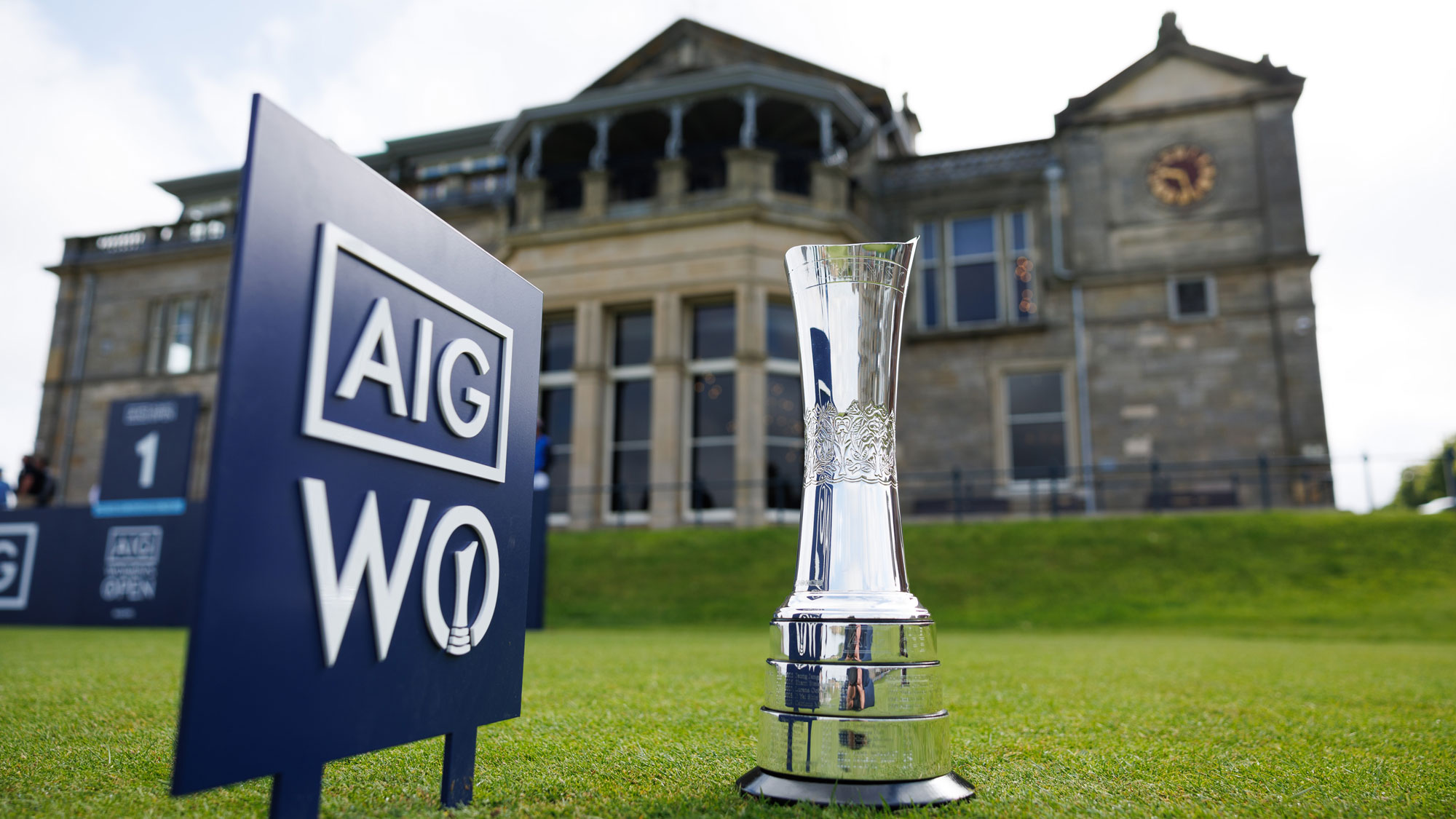 An In-Depth Preview To The AIG Women's Open, The Major Everyone Wants To Win....
An In-Depth Preview To The AIG Women's Open, The Major Everyone Wants To Win....Who will lift the coveted AIG Women's Open trophy? Reflection and predictions for the final women's Major of the year
By Alison Root Published